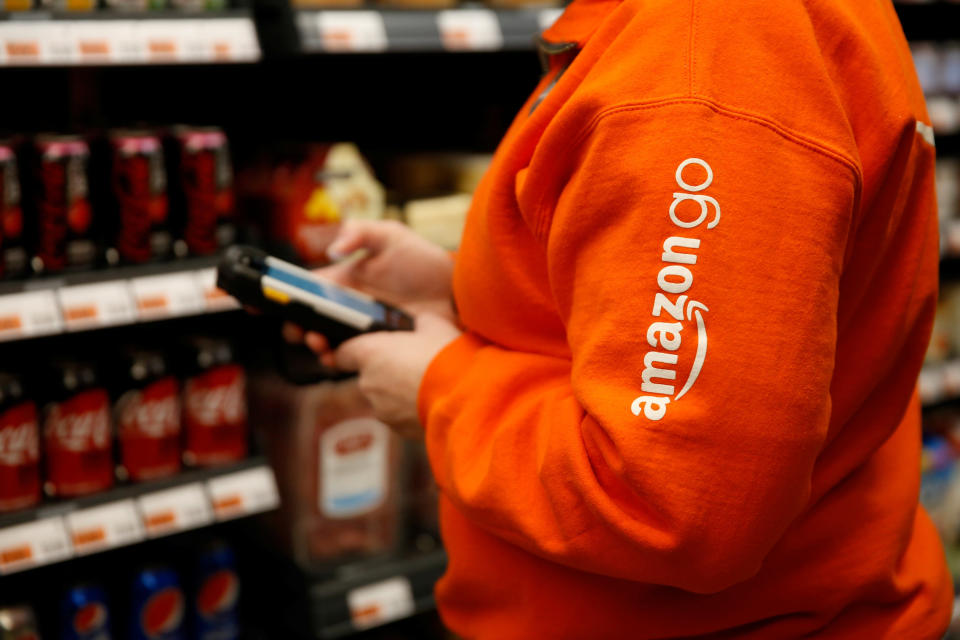The mega-disruptors—Uber and Amazon—are finally facing a real threat
Companies like Amazon (AMZN) and Uber, once viewed as virtually unstoppable market disruptors, could well end up being disrupted themselves, according to a note by CLSA analyst Shaun Cochran.
Since their inception, Amazon and Uber have upended their respective markets: Amazon dramatically changed the online retail experience, forcing traditional brick-and-mortar stores to adapt or perish, and Uber transformed the transportation industry, offering a much more efficient solution to the long-established taxi system.
While Amazon has paved the way for data-driven, tech-heavy physical retail experiences through Amazon Go, its cashier-free grocery stores with 10 locations, some traditional brick-and-mortar retailers are making big strides to catch up.

This January, Kroger (KR) announced it’s partnering with Microsoft (MSFT) to “redefine” in-store shopping for customers. Kroger plans to deploy new technologies to two pilot stores in Ohio and Washington State, including an app that guides customers around the store to quickly find items, as well as digital price tags and promotions. Kroger plans on using customer purchase data, stored and crunched on Microsoft’s cloud-computing Azure platform, to sell digital ads and customized offers.
Kroger also signed a deal with Ocado, a UK-based online supermarket company, to order 20 automated customer fulfillment centers during the first three years of the agreement.
While that figure pales in comparison to Amazon’s 75 fulfillment centers in North America, Cochran praised Kroger’s efforts in his report published in early February.
“Efforts like these show that the retail incumbents finally get it,” wrote Cochran, who added that retailers now realize that consumers prioritize time and convenience over wandering around store aisles.
Disrupting the last mile
The tables could also turn on Uber, which has aggressively expanded in more recent years beyond its core ride-hailing business.

Uber’s food delivery service, Uber Eats, is reportedly on track to generate at least $1 billion in revenues this year, or between 7% to 10% of Uber’s overall annual revenues. But the company, which is expected to IPO later this year, could face increasing competition from several manufacturers looking to capture that so-called “last mile” — the last stretch of delivery between the fulfillment warehouse and a shopper’s doorstep.
“The emergence of last-mile delivery robots that take advantage of city-by-city opportunities for deliveries will continue this rising competition trend into Uber’s expansion markets, as well,” Cochran wrote.
Amazon is already testing six electric, autonomous Scout robots to deliver packages in an undisclosed neighborhood in Snohomish County, Washington. The six-wheeled, cooler-sized robots are currently accompanied by an Amazon employee, but the company said it eventually plans for the Scout robots to “autonomously follow their delivery route.”
Amazon isn’t the only company developing autonomous delivery robots. German automotive manufacturing company Continental AG demonstrated at this year’s CES in January a holistic strategy combining self-driving shuttles that would deploy delivery robots as they approach the drop-off destination.
College students are also benefiting from all this rapid experimentation. This January, George Mason University announced its 40,000 students can order food, delivered by a fleet of 25 robots manufactured by Starship Technologies, in 15 minutes or less. The delivery fee? A manageable $1.99 per order.
“Our goal is to make life easier, whether that means skipping the line, eating lunch on the lawn rather than in the cafe, or finding the time to eat better when studying for exams,” Ryan Tuohy, Starship Technology’s senior vice president of business development, said in a statement this January.
Ironically, making life easier for consumers could also mean making life harder for at least some businesses on the receiving end of disruption.
More from JP:
